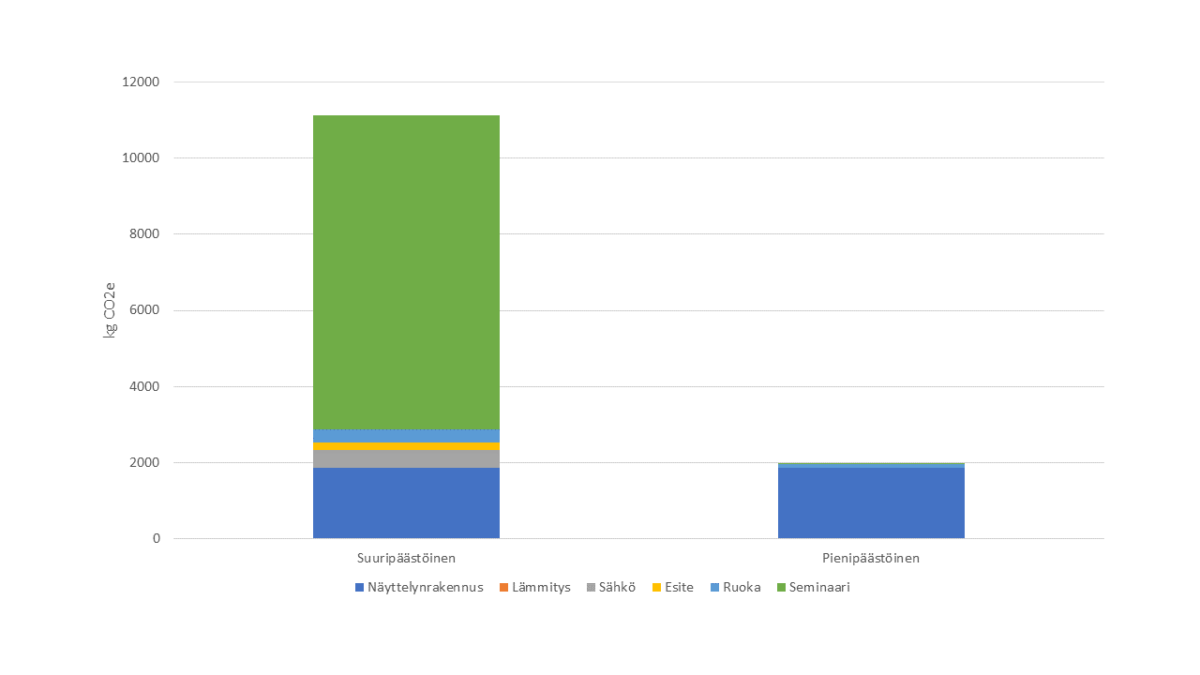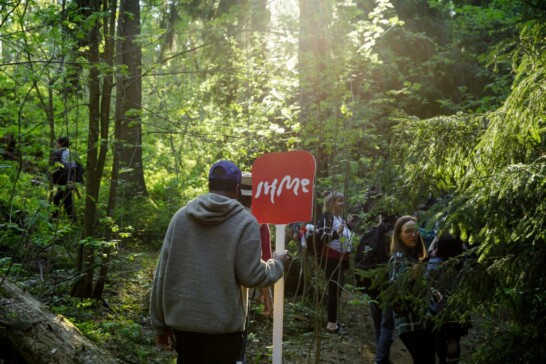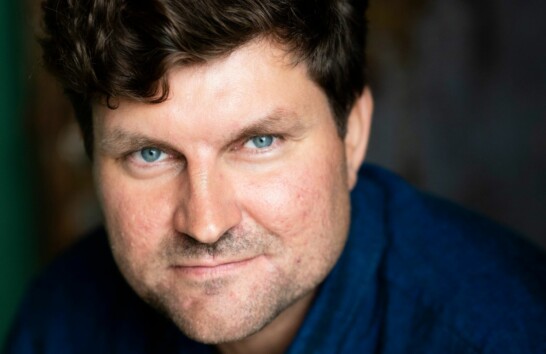Ecoblog
Carbon footprint of art production at IHME

IHME has been taking the environment into account in exemplary fashion for a long time now. IHME staff are committed to ecological change, and sustainable methods are a part of everything we do, from values and strategy to operating plan and budget. IHME actively keeps up with the latest environmental news – coffee-break talk might be about eating bream to reduce algal blooms. This year, IHME took a significant step by employing a part-time human resource: an eco-coordinator. The carbon footprint caused by art production and communicating about it are two of the concrete issues that I will be going into in my one-year stint as eco-coordinator.
Carbon-footprint calculations make a tangible contribution to evaluating the environmental impact of actions, and give centre stage to factors that may previously have gone unnoticed. Not that IHME was doing anything wrong before. On the contrary! When I was starting the job, I doubted for a moment whether an eco-coordinator had anything more to add, since IHME has made such sustainable choices! Of course, criticism has its place, and things can always be better, but the starting points are good.
Guiding principles of IHME art production
The key to IHME’s art production is: a little, but with a lot of freedom. It’s a rare, bold move for an art organization to produce just one work a year. This conforms fully to the rule of a lower-emission exhibition cycle: “slower, less often, longer.” To that we could add “less” and maybe even “better”, since IHME picks one topical, thought-provoking artist from the bunch and gives them the artistic freedom to produce a single work – within a framework of life-sustaining systems, as it says in IHME’s values.
The fact that the artist comes from abroad is also in line with the ecological principle, even if it involves flying: A basic assumption is that lower emissions are generated by bringing an internationally respected artist to Finland than by travelling en masse to view their work abroad. But then, unlike the artist, the materials are local: no truckloads of materials are transported from elsewhere for any production, rather, the work is constructed on the spot out of materials that come from as close as possible.
Compare alternatives and decide
Now, as eco-coordinator, I have simply put the numbers into this operating model. A calculator makes it easier to compare the various alternatives. When weighing up various options for implementing the IHME 2020 sound installation, we came to the following conclusions:
- Emissions from exhibition construction cannot be reduced, added to which both the artist and sound designer have to be present, and both come from abroad.
- The biggest emission reduction comes from not staging the interviews with international experts, planned as a supplementary event, as a panel discussion in Helsinki, but doing them in print online.
- Emissions are also reduced by replacing meat with plant-based food and producing a carbon-neutral brochure.
Carbon footprint of art production / High-emission alternative
- Exhibition construction
- Artist from Oslo + sound designer from London: 1712 kg CO2e*
- Loudspeakers from St Petersburg (private car): 150 kg CO2e
- Commissioned work at the Rowing Stadium
- Heating: The space does not require heating (0 kg CO2e)
- Electricity: The planned 24 speakers with standard electricity 480 kg CO2e
- Brochure (6000 copies): 198 kg CO2e
- Occasions with invited guests (official opening and closing)
- 100 beef meals 347 kg CO2e
- Seminar
- with participants from Germany, Norway, the USA and Thailand, plus three from Finland: 8226 kg CO2e
- The calculation does not include the audience’s journeys or emissions from advertising
- TOTAL 11.113 kg CO2e
Carbon footprint of art production / Low-emission alternative
- Exhibition construction:
- Artist from Oslo + sound designer from London: 1712 kg CO2e
- Loudspeakers from St Petersburg (private car): 150 kg CO2e
- Commissioned work at the Rowing Stadium
- Heating: The space does not require heating (0 kg CO2e)
- Electricity: 14 speakers with environmental electricity 0 kg CO2
- Brochure (6000 copies, low-emission, carbon-compensated): 0 kg CO2e
- Occasions with invited guests (official opening and closing)
- 100 vegetarian meals 101 kg CO2e
- Alternative to the seminar: expert interviews in print online
- 20,000 readers on IHME’s website: 10 kg CO2e
- The calculation does not include the audience’s journeys or emissions from advertising
- TOTAL 1973 kg CO2e
* CO2e = carbon dioxide equivalent
The calculations have been made with the calculator of the Carbon smart organization project.
This article is part of a series published in 2020 about the carbon footprint of an art production, written by IHME eco-coordinator Saara Korpela.
Read all Ecoblog posts published in 2020:
- What do calories and carbon dioxide have in common?
- Time to start carbon footprint calculation!
- How to calculate the carbon footprint for heating?
- Small or large scale, emissions can be brought down
- Carbon footprint of art-production at IHME
- How to promote sustainable eating in an art organization?
- The carbon footprint of an event
- Miles and meetings
- Carbon footprints of art organizations and Carbon Challenge 2030


